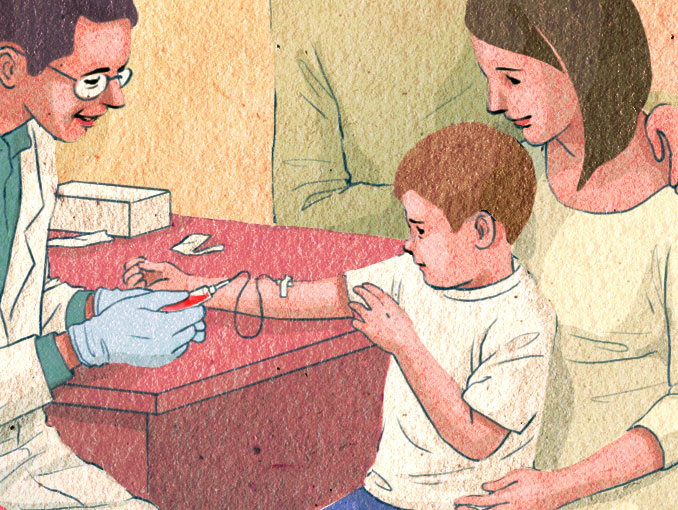
THIS ARTICLE IS MORE THAN FIVE YEARS OLD
This article is more than five years old. Autism research — and science in general — is constantly evolving, so older articles may contain information or theories that have been reevaluated since their original publication date.
To diagnose autism, clinicians currently rely on behaviors, such as social deficits and repetitive behaviors. But they have long sought more objective measures — a blood test or a brain scan — that would help them reach the diagnosis faster and earlier.
The latest attempt at this delicate endeavor points to a panel of small molecules in the blood that can distinguish people with autism from controls with 81 percent accuracy. The preliminary findings, published 7 November in PLoS ONE, have already drawn a $2.3 million investment in follow-up studies for Stemina, the Madison, Wisconsin-based company leading the effort.
But if past performance of biomarker candidates is any indication, great caution is warranted. The results of such blood tests are error-prone and difficult to reproduce, according to a 2012 report from the Institute of Medicine, and their transition to clinical practice has been slower than expected. Indeed, some genetic tests for autism showed early promise only to later be discredited.
In the new study, researchers collected blood from 39 children diagnosed with autism and 22 controls. The children, aged 4 to 6 years, had fasted since the previous evening.
The researchers identified 179 small molecules, called metabolites, which were altered in the children with autism. These include citric acid, succinic acid and creatinine, which have all been linked to autism.
The researchers then screened blood samples from 13 additional children with autism and 8 controls for subsets of these metabolites. They found that a panel consisting of as few as 80 of the molecules predicts autism with 81 percent accuracy.
But overall accuracy isn’t everything. It is important to consider two metrics that determine accuracy: how ‘sensitive’ a test is in detecting people with the disorder, and how ‘specific’ in excluding those without it.
The 80-metabolite panel has 92 percent sensitivity for finding children with autism, which means that it misses 8 percent of children with the disorder. Its specificity hovers at about 63 percent, which means that more than one-third of those screened are falsely pegged as having autism.
It is also unclear whether the panel can reliably distinguish people with autism from those with other neurodevelopmental disorders — a critical requirement for any autism test.
The researchers are careful to point out that the findings are preliminary. Future studies will need to involve hundreds, if not thousands, of individuals. They will also need to account for a plethora of potentially confounding variables, such as medication use, diet, gender, race, ethnicity and the presence of other disorders, such as gastrointestinal problems, which are common in autism.
That said, the researchers should be commended for their exhaustive analysis of the blood metabolites, which included five different measurement techniques. They also followed clear protocols for selecting, collecting, handling and analyzing their samples and used two different statistical methods to dissect their data.
Even if the findings do not end up translating into a diagnostic for autism, they may still yield fundamental insights into the molecular underpinnings of the disorder. And perhaps this understanding alone will make inroads into diagnosing and treating autism.
By joining the discussion, you agree to our privacy policy.